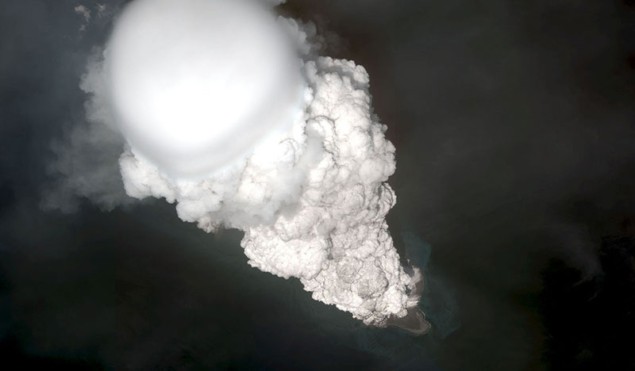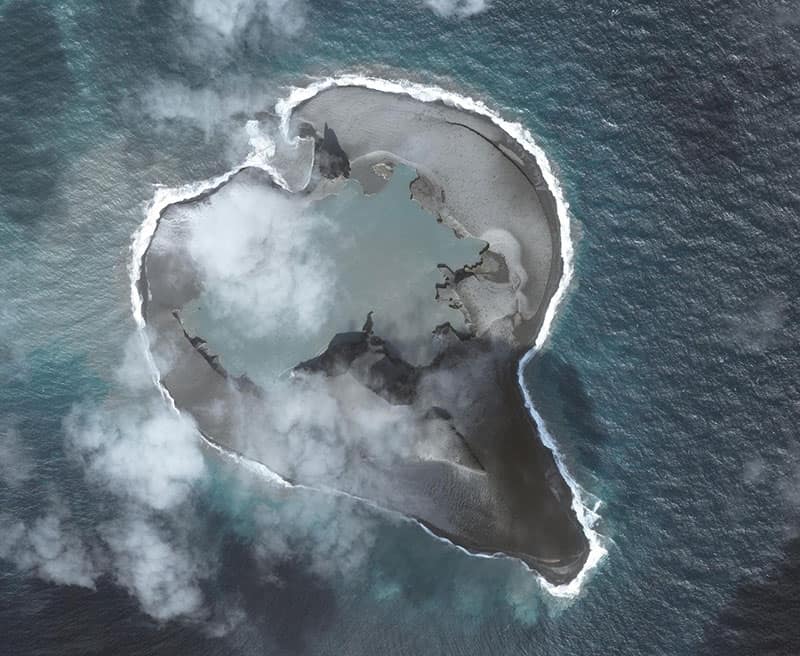
Volcanic thunder, long thought to be impossible to hear on account of the intense sounds produced by volcanic eruptions, has been recorded for the first time. A team from the United States Geological Survey (USGS) and Alaska Volcano Observatory captured the sound during a series of eruptions last year at Bogoslof volcano. The rumbles could tell us more about this volcano’s inner workings.
Advances in the understanding of volcanic lightening, which forms as particles rub against each other, have provided a powerful new tool for volcano monitoring, helping scientists work out the amount of ash emitted. Now, volcanic thunder can join the monitoring toolkit.
Volcanic ash poses a major hazard to aircraft. If sucked into a jet engine, the ash may weld together and form a thick concrete, quickly causing the engine to fail. Monitoring ash plume development and advising aircraft to steer clear can prevent such a disaster.
Volcanic thunder indicates an eruption is under way and producing a significant amount of ash. For a long time, other noises caused by the erupting volcano have drowned out the thunder, but Matt Haney from the Alaska Volcano Observatory and his colleagues have found a way to separate the thunder from other activity. The study is accepted for publication in Geophysical Research Letters (GRL).
Using maps of volcanic lightening and a suite of microphones stationed on an island nearby, the team was able to work out exactly where the sound was coming from. “This opens up new ways to detect and analyse volcanic ash plumes,” said Heaney. “I expect that volcanic thunder will be observed at other volcanoes in the future.”

However, this technique is limited by the precise weather and eruption conditions needed to record the thunder. With over 60 explosive events during Bogoslof’s 2016–17 eruption sequence, only a handful offered the best conditions.
“The optimal conditions are when the wind is low, when you are downwind of the volcano, and when the eruption quiets down abruptly,” said Heaney.
Recording volcanic thunder offers scientists a new way of detecting volcanic lightning and, potentially, a means of estimating the size of an ash plume, but many questions remain. The next step is to understand how specific properties of volcanic ash translate into lightning patterns. Armed with this information, volcanologists could better map the hazard posed to aircraft.



